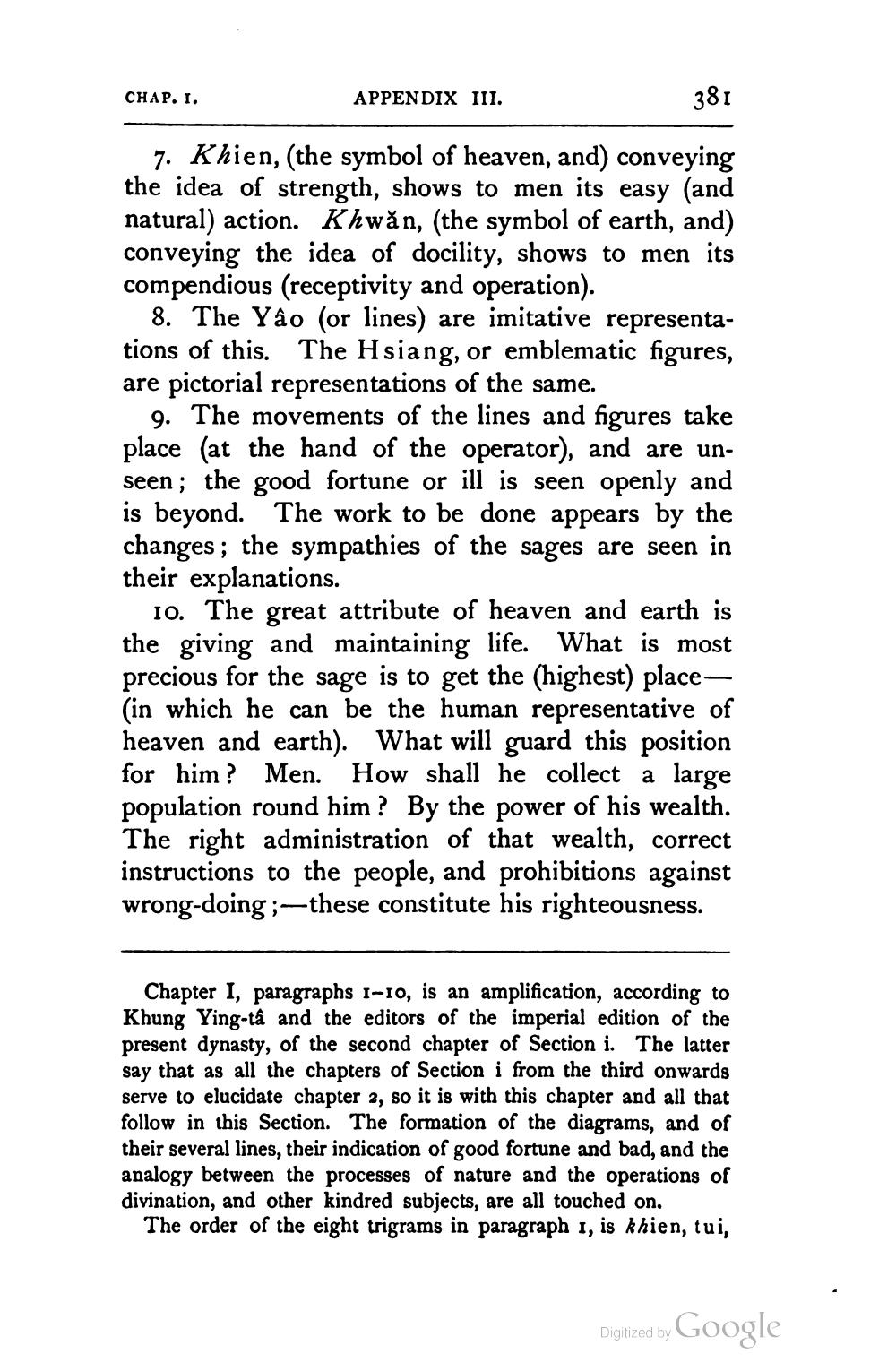________________
CHAP. I.
APPENDIX III.
381
7. Khien, (the symbol of heaven, and) conveying the idea of strength, shows to men its easy (and natural) action. Khwăn, (the symbol of earth, and) conveying the idea of docility, shows to men its compendious (receptivity and operation).
8. The Yâo (or lines) are imitative representations of this. The Hsiang, or emblematic figures, are pictorial representations of the same.
9. The movements of the lines and figures take place (at the hand of the operator), and are unseen; the good fortune or ill is seen openly and is beyond. The work to be done appears by the changes; the sympathies of the sages are seen in their explanations.
10. The great attribute of heaven and earth is the giving and maintaining life. What is most precious for the sage is to get the (highest) place(in which he can be the human representative of heaven and earth). What will guard this position for him ? Men. How shall he collect a large population round him? By the power of his wealth. The right administration of that wealth, correct instructions to the people, and prohibitions against wrong-doing ;--these constitute his righteousness.
Chapter I, paragraphs 1-10, is an amplification, according to Khung Ying-tâ and the editors of the imperial edition of the present dynasty, of the second chapter of Section i. The latter say that as all the chapters of Section i from the third onwards serve to elucidate chapter 2, so it is with this chapter and all that follow in this Section. The formation of the diagrams, and of their several lines, their indication of good fortune and bad, and the analogy between the processes of nature and the operations of divination, and other kindred subjects, are all touched on.
The order of the eight trigrams in paragraph 1, is khien, tui,
Digitized by Google




